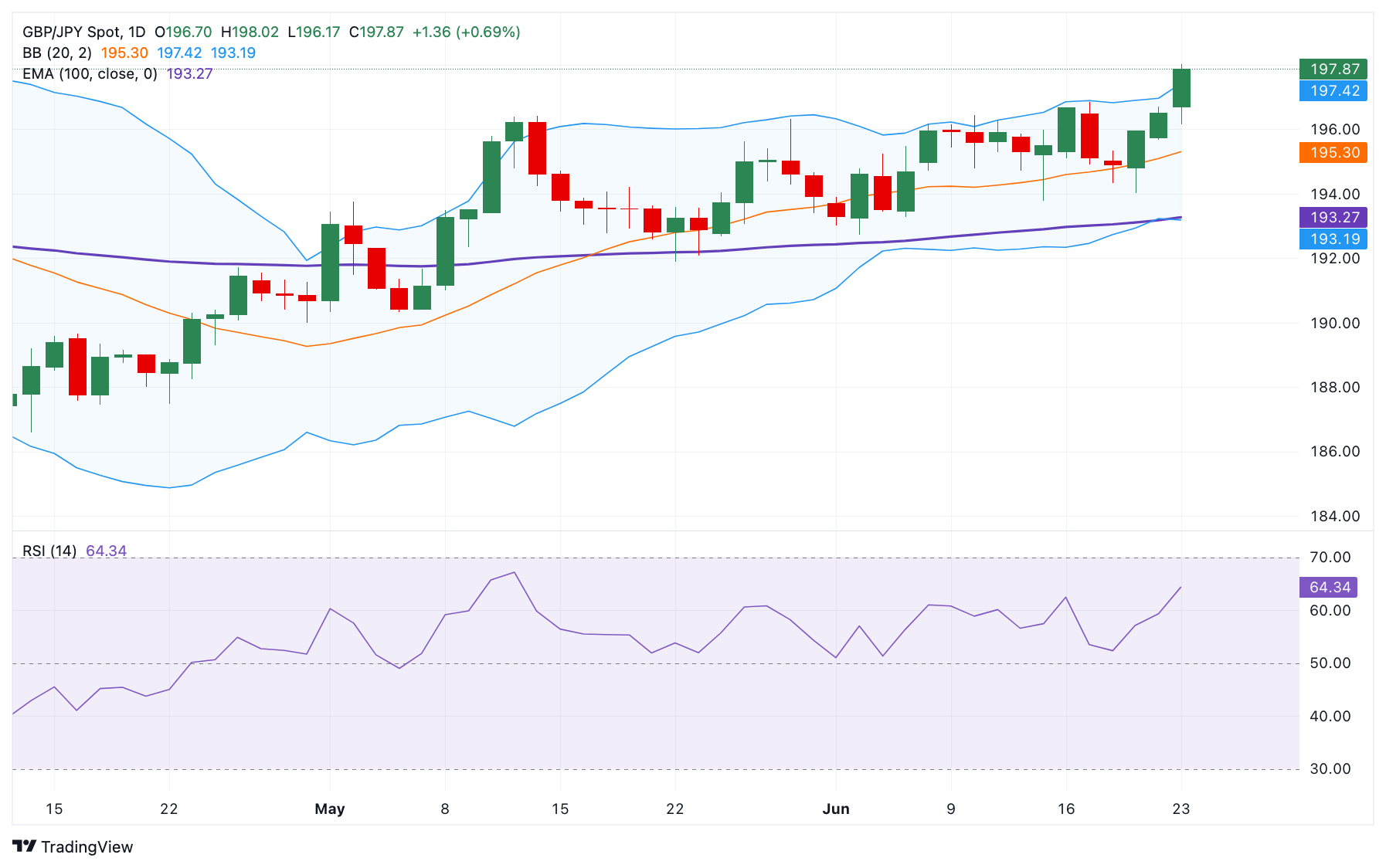GBP/JPY Price Forecast: Retains bullish bias near 198.00
- GBP/JPY strengthens to around 197.95 in Monday’s early European session.
- The cross maintains a constructive view above the 100-day EMA with the bullish RSI indicator.
- The immediate resistance level is seen at 198.81; the initial support level is located at 194.34.
The GBP/JPY cross trades in positive territory for the third consecutive day near 197.95 during the early European session on Monday. The Japanese Yen (JPY) weakens against the Pound Sterling (GBP) as the Bank of Japan's (BoJ) preference to move cautiously in normalizing still-easy monetary policy forces traders to push back their bets about the likely timing of the next interest rate hike to Q1 2026.
Technically, GBP/JPY keeps the bullish vibe on the daily chart, with the price holding above the key 100-day Exponential Moving Average (EMA). The path of least resistance is to the upside, as the 14-day Relative Strength Index (RSI) stands above the midline near 64.50. This suggests bullish momentum in the near term.
The first upside target to watch for the cross is seen at 198.81, the high of July 25, 2024. Extended gains could see a rally to the 200 psychological level. Further north, the next hurdle is located at 203.62, the high of July 22, 2024.
On the other hand, the initial support level for GBP/JPY emerges at 194.34, the low of June 18. A breach of this level could expose the key contention level in the 193.30-193.20 zone, representing the 100-day EMA and the lower limit of the Bollinger Band. The additional downside filter to watch is 191.90, the low of May 22.
GBP/JPY Daily Chart

Japanese Yen FAQs
The Japanese Yen (JPY) is one of the world’s most traded currencies. Its value is broadly determined by the performance of the Japanese economy, but more specifically by the Bank of Japan’s policy, the differential between Japanese and US bond yields, or risk sentiment among traders, among other factors.
One of the Bank of Japan’s mandates is currency control, so its moves are key for the Yen. The BoJ has directly intervened in currency markets sometimes, generally to lower the value of the Yen, although it refrains from doing it often due to political concerns of its main trading partners. The BoJ ultra-loose monetary policy between 2013 and 2024 caused the Yen to depreciate against its main currency peers due to an increasing policy divergence between the Bank of Japan and other main central banks. More recently, the gradually unwinding of this ultra-loose policy has given some support to the Yen.
Over the last decade, the BoJ’s stance of sticking to ultra-loose monetary policy has led to a widening policy divergence with other central banks, particularly with the US Federal Reserve. This supported a widening of the differential between the 10-year US and Japanese bonds, which favored the US Dollar against the Japanese Yen. The BoJ decision in 2024 to gradually abandon the ultra-loose policy, coupled with interest-rate cuts in other major central banks, is narrowing this differential.
The Japanese Yen is often seen as a safe-haven investment. This means that in times of market stress, investors are more likely to put their money in the Japanese currency due to its supposed reliability and stability. Turbulent times are likely to strengthen the Yen’s value against other currencies seen as more risky to invest in.

